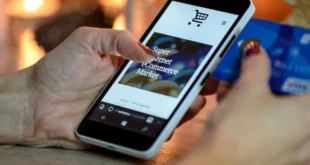Issue 30, summer/fall 2020
https://doi.org/10.70090/JG20PPRI
Introduction
In their work on the regulation of social media influencers, Catalina Goanta and Sofia Ranchordás noted that the topic’s complexities involve, among other things, rethinking “the distinction between peers and professionals” (2019, 14). The United Arab Emirates in 2018 addressed this issue by essentially professionalizing what had previously often been seen as a form of “peer-to-peer” marketing. It did this by requiring official licensure for independent influencers producing sponsored content; it also affirmed the need for clear identification of the latter.
While controls on social media content or e-commerce were not new in the UAE or the other Gulf Cooperation Council states, the licensing requirement marked the first such effort in the region specifically aimed at influencers (Bell 2018).[1] The UAE also recently announced that influencer activities are subject to compliance with Value Added Tax obligations, a measure discussed briefly below.
Influencer marketing
What may be called influencer marketing or social media marketing works by enlisting individuals active on digital platforms to reach their followers with a marketing message. The term influencer, as a Financial Times writer described it, is “a vague and somewhat unappealing name for individuals who make a living through digital channels, posting semi-aspirational, often sponsored content to platforms such as YouTube and Instagram” (Stoppard 2020). Samantha Kay, Rory Mulcahy, and Joy Parkinson noted:
“An influencer has the tools and perceived authenticity to consistently attract many viewers and can motivate others to expand their social reach. Thus, social media influencers’ audiences are not limited to their actual followers; they can connect with the followers of their followers who share their content, extending their potential reach exponentially” (2020, 250).
Accordingly, as Itay P. Fainmesser and Andrea Galeotti observed, influencers “attract the attention of marketers, who are willing to pay them to endorse brands and products” (2019, 2).
Influencers with large numbers of followers include established celebrities who entered social media with a personal brand already in place because of their past accomplishments, as well as others who developed their brand and follower base on the platforms themselves (see, e.g., Khamis et al. 2017). These mega or macro influencers exploit their follower numbers by becoming brand ambassadors for companies or organizations. The influencer categorizations used here require caution, as there are no industry standards, but mega influencers may have followers in the millions. Mega and macro influencers (100,000 to 1 million+ followers) impact other influencers as well as businesses. But there are many smaller-scale micro (10,000-100,000 followers) and nano (1,000-10,000 followers) influencers to consider. Marketers see these smaller-scale influencers as good for targeting niche demographics and as cost-effective at reaching specific audiences.
Based on media reports and what UAE-based marketing professionals and influencers have told the author, smaller-scale influencers range in commitment. Some, such as students, influence in their spare time; more established practitioners may do it as a virtual lifestyle. Some in university see influencing as a cost-efficient means to beginning a post-graduation media or marketing career; entering retail industries; or launching their own brand. Those starting out may post about or mention products or services in return for “freebies” (such as a simple “Public Relations (PR) package” of samples) or barter agreements. Most seek to eventually monetize their online presence. Their goal is to develop a personal brand with significant follower numbers across multiple digital platforms – prerequisites seen as needed to develop a fee-based relationship with clients. Fees are generally linked to the number of followers, and increasingly to the level of engagement, or audience response or interaction, measured in likes/reactions, shares, views, and/or comments (for engagement, see, e.g., Newman 2020). However, followers and engagement can be bought and automated (see, e.g., Stewart 2020).
Peers and profits
In general, the technology behind influencing is cheap, easy to use, and reaches large audiences. It has resulted in a wide range of influencer content across a variety of social digital platforms, involving posts, reviews, recommendations, or conversations about a product or service. Advertising and PR agencies employ influencers to create brand awareness and increase/enhance brand salience because audiences often see them (particularly smaller-scale influencers) as trustworthy (see, e.g., Peake 2018). Influencers are seen in sectors such as beauty as part of what has been described as “a gradual shift towards realistic messaging” (Khamis 2018). Millennial consumers may view micro-influencers “more as peers than celebrities” (Wolfson 2017).
Goanta and Ranchordás have cautioned about such perceptions. “Influencer marketing,” they write, “conveys the appearance of a ‘peer-to-peer’ or grassroots form of content production where average individuals who have reached fame and fortune through their authentic and engaging content endorse products they genuinely use and services they believe in.” However, “what influencer marketing is truly about [is] monetization through advertising on social media” (2019, 8-9). The revenues involved underscore the seriousness of influencer marketing. By pre-pandemic estimates it was expected to be a $15 billion industry by 2022 (Schomer 2019), although brand budget cuts caused by Covid-19 may have had a significant effect (Arabian Business 2020).
Toward regulation in the UAE
Conventional advertisements stand out as interruptions of programming or other content and are therefore recognizable for what they are. However, promotional messages via influencers may come cloaked, for example, as informative pieces or “peer” messages of outreach and interaction. Such native advertising “blends into its online context by mirroring the format of surrounding nonadvertising content” and there may be no indication if the influencer was paid to recommend a product or service (Campbell and Grimm 2019, 110; see also Kurian-Murshed 2018). In many countries, authorities have issued regulations, guidelines, statements, or similar forms of secondary legislation to clarify influencer obligations under existing forms of primary legislation that address advertising transparency and prohibit fraud. For example, Canada’s federal Competition Bureau, which enforces the country’s 1986 Competition Act, holds that the latter’s provisions apply to influencers. In the United States, the Federal Trade Commission has published documents addressing how existing advertising law affects marketing via digital technologies, including disclosure and other legal responsibilities for influencers (International Trademark Association n.d.; Competition Bureau Canada n.d.; Federal Trade Commission 2019).
Advertising in the UAE is subject to what has been described as a “complex web of laws and regulations that demand [advertisers] ensure the accuracy of communications with customers” (Steyn 2012). Elements relevant to advertising and marketing exist, for example, in Federal Law 15 of 1980 (the press law); Federal Law 3 of 1987 (the penal code); Federal Law 24 of 2006 (on consumer protection); and Federal Law 19 of 2016 (on combating commercial fraud).[2] That said, in early 2017, and despite a generally high level of regulation of online content and social media use in the UAE and GCC, panelists at a marketing industry summit in the UAE concurred that the region had a “Wild West mentality” when it came to influencer marketing (Jabri-Pickett 2017).
By then in fact the UAE government had already begun to shift toward closer scrutiny of the field. In 2016, an updated version of the Telecommunication Regulatory Authority’s consumer protection regulations regarding online marketing came into effect. It included the elements UAE-based legal experts deemed applicable to “advertising on social media and even the seeding of positive comments online or trolling of competitor posts” (Robertson and Fawcett 2016). Steps in 2017 toward increased influencer regulation included a July UAE Cabinet Resolution (No. 23) which affirmed the need for clear identification of influencer advertising (Robertson 2018; Tymburski and Shaheen 2017). The country’s National Media Council (NMC) subsequently restated the proviso on identifying paid advertising and called for new licensing for electronic media activities (UAE National Media Council 2017[a] and 2017[b]). These would include a specific licensure requirement for influencers doing paid promotional work. According to the NMC, the licensing effort was meant, as a journalist paraphrased it:
“to professionalize and regulate the industry[…]The licence would be similar to those that magazines and newspapers acquire from the authorities. It is not intended to constrain creativity but to ensure earnings are above board and standards are high, the council said” (Dajani 2018).
The 2018 NMC Electronic Media Regulation (EMR) and Advertising Guide
The NMC set forth the particulars in its 2018 Electronic Media Regulation (EMR) document. Among other things, it required influencers doing advertising work on social media to obtain a license for AED 15,000 (about US $4,080) per year, renewable for the same amount. Applicants for individual “e-media” licenses needed to identify the websites or social media accounts they used. Those using social media for promotional purposes had to ensure their ads met NMC standards. Those failing to abide by the new rules risked fines of up to AED 5,000, about US $1,360, or having their accounts shut down. Before the licensing requirements took effect in June, the authorities clarified that individual influencers needed, not only an e-media license to conduct promotion-related electronic activities, but a separate trade license as well. The latter license’s costs depended on several factors, but generally started at AED 14,000, about US $3,800. Alternatively, influencers could opt to form small companies and apply for both a trade license and a special “partnership” e-media license (costing the same as those for individual influencers).[3] Or they could join existing NMC-licensed influencer management agencies, which would exempt them from buying individual licenses but would limit them to working solely with agency clients (derived from UAE National Media Council n.d. [a] and n.d. [b]; Robertson 2018; Keystrategy.ae 2018; Zaki 2018; and Kell 2018. For trade license costs, see Taylor 2018).
The EMR did not specifically address identifiers for paid promotional content – that would come later. Nor did the document define what a social media influencer is or does, or address issues such as follower numbers. While its provisions required licensing for online commercial activities, they did not apply to individuals using digital media for non-promotional purposes. Nor did they apply to an existing company’s use of social media to promote itself. Though initially unclear, the NMC clarified the EMR as applicable to barter-type promotional work in which compensation other than money was involved (derived from Keystrategy.ae 2018; Cherian 2018; Dowle 2018; and Robertson 2018).
The NMC addressed how to identify promotional content in its subsequent Advertising Guide, released in late October. It stated that disclosure statements, hashtags, etc., were to be distinctive and clearly worded, appear early in the content, and be located in each post’s main section (not, for example, via a link). Promotional video content would have to include disclosures in any descriptive text, such as that found next to YouTube videos; disclosure should also be acknowledged verbally within the footage. Failure to comply could result in an AED 5,000 fine, with additional amounts specified for repeat offences within a year of the initial one (derived from UAE National Media Council n.d. [c]; Salama 2018; CMS Law-Now 2018).
Responses
These measures to regulate influencer marketing in the UAE came at a time when brands had reportedly started questioning influencer effectiveness and claims of follower numbers. Influencer-led marketing activities were said to have declined early in 2018 (Nair, 2018). One industry professional, opining in the Dubai-based newspaper Gulf News, even cited the emergence of a “stigma attached to the term ‘influencer’ — from issues surrounding inflated pricing and diva demands to concerns about fake followers and lack of accountability” (Dizadji 2018).
Some UAE observers applauded the new rules as enhancing transparency and raising standards (see, e.g, Bell 2018; Dizadji 2018; and Dhal 2018). It was noted that certain influencers had already morphed into polished media personalities, and that the new regulations reflected larger, global trends at regulating the monetization of social media (Peake 2018). Alternately, however, license cost factors prompted concerns from newcomers and smaller-scale influencers, and even some established figures (see, e.g., Al Saleh 2018; Dhal 2018; and Duncan 2018). Announcement of the requirements encouraged influencer management agencies to invite UAE influencers to join, and thus avoid having to buy the licenses (Zaki 2018). Some signed on with such firms; others were reluctant to lose their independence and control over content (Al Saleh 2018). On its part, the NMC described the new licensing costs as affordable (Kell 2018). By late June 2018 more than 500 licenses were estimated to have been issued (Nair 2018). Roughly a year later, the number had swelled to about 1700; an undisclosed number of unlicensed influencers had reportedly been fined (Rizvi 2019).
Compliance and perception
Some research on influencer sponsorship disclosure has yielded results that, put briefly, “suggest that disclosure can enhance, rather than detract, from consumer outcomes” (Kay et al. 2020, 268). However, a 2019 survey involving Saudi Arabian and UAE residents found that of those responding, “around 3 in 5 say they are less likely to trust an influencer review if they have been paid to advertise it” (BPG Group/YouGov 2019). Influencer perception of such effects may have affected compliance. While a 2018 survey of influencers found that 70 percent of respondents disclosed “sponsored content to their audience through hashtags or disclaimer statements,” a later survey of UAE influencers suggested compliance with disclosure was lagging (BPG Group/Orange 2018). Though about half of respondents (52 percent) reported having obtained UAE licensure, 16 percent reported that they “always disclose in a clear manner any brand integrations or branded content that I post,” while 84 percent did not. Additionally, 44 percent reported that they used Instagram’s “Paid Partnership” tag when appropriate; 56 percent did not (Bukhash Brothers 2019, 9, 14).
In 2018, as the licensing requirements’ effective date approached, one UAE-based influencer had said, “At the end of the day, we will follow the rules” (quoted in Dhal 2018). To judge from the later survey results, not all influencers necessarily shared that view. It is currently unclear to what degree liability (presumably civil) might fall on brands if influencer licensing and disclosure issues are raised. However, UAE-based marketing professionals have told the author that brands feel increasingly responsible to ensure that influencers representing them follow the EMR.
2021 Value Added Tax obligation
A more recent UAE government effort to regulate the monetization of social media came early in 2021. As reported by the Abu Dhabi-based newspaper The National, the country’s Federal Tax Authority announced that influencer activities were subject to compliance with the country’s Value Added Tax law if annual earnings totaled over AED375,000, approximately $102,000 – the figure included the value of barter agreements. The latter provision, observers told The National, “could herald the end of influencers accepting expensive holidays or gifts in return for promotion on their social media accounts” (Duncan 2021; see also UAE Federal Tax Authority 2021; and Moossdorff 2021).
Conclusion
The UAE’s 2018 introduction of licensing requirements for influencer marketing, coupled with disclosure guidelines meant to address transparency issues, was part of an acknowledged official effort to professionalize what had previously often been viewed as a “peer-to-peer” activity. At the same time, licensure costs threatened to impact smaller-scale influencers. Additionally, subsequent surveys suggest that sponsorship disclosure has not necessarily yielded greater trust in regional influencer reviews, and that not all UAE influencers have been in close compliance with such requirements.
Acknowledgements:
For input, critical reading, or other assistance with this article, the author wishes to thank Dr. Abeer Al-Najjar, Dr. Mohammad Ayish, Dr. Harris Breslow, Dr. Giacomo Chiozza, Dr. Mohammed Ibahrine, Dr. John King, Dr. Bethany Shockley, and Gureni Lukwaro of the American University of Sharjah; Dr. Bouziane Zaid of the University of Sharjah; Jamal Almawed; Taryam Al Subaihi; Haya Alyasin; Omnia Al Saleh; Bukhash Brothers; Haneen Dajani; Dana Bou Fakhereddine; Dr. Anna Kuzio; Amira El Serafy; Deena Hussein; Manal Ismail; Michael Jabri-Pickett; Jumana Khamis; Arif Ladhabhoy; Lee McMahon; Matthew Ritt; Fiona Robertson; Rohma Sadaqat; Hams Saleh; Nadia Saleem; Sherouk Zakaria; and Yousra Zaki.
Bibliography
Al Saleh, O. 2018. “Will New UAE Social Media Laws Improve the Industry or Price Out Young Entrepreneurs?,” The National, 24 June 2018.
https://www.thenational.ae/uae/will-new-uae-social-media-laws-improve-the-industry-or-price-out-young-entrepreneurs-1.743731 (accessed 7 May 2019).
BPG Group/Orange. 2018. “Social Media Influencers Survey” infographic. Dubai: BPG Group/Orange.
BPG Group/YouGov. 2019. “Influencers 2019 Survey” slide set. Dubai: BPG Group/YouGov.
Bell, J. 2018. “Social Media ‘Influencers’ are Being Reined in under New UAE Laws - Will Other Gulf Nations Follow Lead?” Arab News, 17 July 2018. http://www.arabnews.com/node/1338881/media (accessed 5 May 2019).
Bukhash Brothers. 2019. Influencer Marketing Research in the UAE 2018-2019. Dubai: Bukhash Brothers.
Campbell, C., and P.E. Grimm. 2019. “The Challenges Native Advertising Poses: Exploring Potential Federal Trade Commission Responses and Identifying Research Needs.” Journal of Public Policy and Marketing 38(1).
Cherian, D. 2018. “UAE Social Media Influencer Law Explained,” Gulf News, 23 June 2018. https://gulfnews.com/guides/life/uae-social-media-influencer-law-explained-1.2240906 (accessed 12 May 2019).
Competition Bureau Canada. N.d. “Influencer Marketing: A Competition Bureau Perspective,” https://www.competitionbureau.gc.ca/eic/site/cb-bc.nsf/eng/ 04372.html, accessed 21 May 2021.
Dajani, H. 2018. “UAE's Paid Social Media Influencers Will Need Licence Under New Media Rules,” The National, 8 March 2018.
https://www.thenationalnews.com/uae/uae-s-paid-social-media-influencers-will-need-licence-under-new-media-rules-1.710664 (accessed 19 March 2021).
Dhal, S. 2018. “Day of Reckoning for Social Media Influencers as New Rules Kick In,” Gulf News, 30 May 2018. https://gulfnews.com/xpress/news/day-of-reckoning-for-social-media-influencers-as-new-rules-kick-in-1.2229464 (accessed 14 June 2021).
Dizadji, T. 2018. “The UAE’s Influencer Regulations are Timed to Perfection,” Gulf News, 26 July 2018. https://gulfnews.com/business/analysis/the-uae-s-influencer-regulations-are-timed-to-perfection-1.2257250 (accessed 12 May 2019).
Dowle, C. 2018. “Electronic Media Regulation in the UAE,” Rouse, 21 Sept. 2018. https://www.rouse.com/magazine/news/your-questions-answered-electronic-media-regulation-in-the-uae/ accessed 11 Nov. 2019).
Duffy, M.J. 2014. United Arab Emirates. Alphen aan den Rijn, The Netherlands: Kluwer Law International.
Duncan, G. 2018. “UAE Social Media Influencer Law: Two Licences Costing Dh30,000 Now Needed,” The National, 11 May 2018. https://www.thenational.ae/uae/uae-social-media-influencer-law-two-licences-costing-dh30-000-now-needed-1.729355 (accessed 12 May 2019).
Duncan, G. 2021. “UAE Tax Authority Warns Influencers That Free Gifts and Experiences are Taxable,” The National, 8 March 2021. https://www.thenationalnews.com/uae/uae-tax-authority-warns-influencers-that-free-gifts-and-experiences-are-taxable-1.1180225 (accessed 21 May 2021).
Fainmesser, I.P., and A. Galeotti. 2019, “The Market for Online Influence,” Johns Hopkins Carey Business School Research Paper No. 18-13, 18 June 2019. https://ssrn.com/abstract=3207810 (accessed 21 May 2021).
Federal Trade Commission. 2019. “Disclosures 101 for Social Media Influencers,” https://www.ftc.gov/system/files/documents/plain-language/1001a-influencer-guide-508_1.pdf (accessed 12 Jan. 2020).
Goanta, C., and S. Ranchordás. 2019. “The Regulation of Social Media Influencers: An Introduction.” University of Groningen Faculty of Law Research Paper Series No. 41/2019, https://ssrn.com/abstract=3457197, (accessed 19 May 2021).
International Trademark Association. N.d. “Recent Developments in Influencer Marketing and Unfair Competition,” https://www.inta.org/wp-content/uploads/public-files/advocacy/committee-reports/ Recent-Developments-in-Influencer-Marketing-and-Unfair-Competition.pdf (accessed 23 Feb. 2021).
Jabri-Pickett, M. 2017. “The Art of Social Media Influencing,” Arabian Business, 3 March 2017. https://www.arabianbusiness.com/the-art-of-social-media-influencing-664652.html (accessed 30 May 2021).
Kay, S, R. Mulcahy and J. Parkinson. 2020. “When Less is More: The Impact of Macro and Micro Social Media Influencers’ Disclosure.” Journal of Marketing Management 36:3-4, 248-278.
Kell, L.A. 2018. “10 Things We Learnt at the NMC’s Licensing Conference,” ITP Live, 6 June 2018. https://itp.live/content/3784-nmc-lisence-conference (accessed 15 June 2020).
Keystrategy.ae. 2018. “Inside the New Rules for UAE Social Influencers in 2018 June,” https://keystrategy.ae/en/inside-the-new-rules-for-uae-social-influencers-in-2018-june/ (accessed 12 May 2019).
Khamis, J. 2018. “Advertising Has a Responsibility to Empower Women,” Gulf News, 11 Aug. 2018. https://gulfnews.com/news/uae/society/advertising-has-a-responsibility-to-empower-women-1.2264661 (accessed 12 May 2019).
Khamis, S., L. Ang, and R. Welling. 2017. “Self-Branding, ‘Micro-Celebrity’ and the Rise of Social Media Influencers.” Celebrity Studies 8(2), 191-208.
Kurian-Murshed, A. 2018. “Your Social Best Friend Bears Liability,” Gulf News, 23 June 2018. https://gulfnews.com/news/uae/media/your-social-best-friend-bears-liability-1.2240676 (accessed 28 May 2019).
Moossdorff, B. 2021. “The Do's And Don'ts in Charging Influences and Influencers UAE's 5% VAT,” Gulf News, 25 March 2021. https://gulfnews.com/business/markets/the-dos-and-donts-in-charging-influences-and-influencers-uaes-5-vat-1.1616672596506 (accessed 1 July 2021).
Nair, M. 2018. “Gulf’s Social Media Influencers Will No Longer Get a Free Ride,” Gulf News, 28 June 2018. https://gulfnews.com/business/sectors/media/gulf-s-social-media-influencers-will-no-longer-get-a-free-ride-1.2243753 (accessed 12 May 2019).
Newman, G. 2020. “What is Engagement Rate and Why is it Important in Influencer Marketing?” 18 Nov. 2020. https://www.scrunch.com/blog/influencer-engagement-rates (accessed 7 July 2021).
Peake, M. 2018.“So You Want to Be a Social Media Influencer?” Gulf News, 25 June 2018. https://fridaymagazine.ae/life-culture/self-improvement/so-you-want-to-be-a-social-media-influencer-1.2239512 (accessed 9 Nov. 2019).
Rizvi, 2019. “Nearly Two Thousand People Granted Social Media Influencer Licenses in UAE,” The National, 26 June 2019. https://www.thenational.ae/uae/nearly-two-thousand-people-granted-social-media-influencer-licences-in-uae-1.879406 (accessed 9 Nov. 2019).
Robertson, F., and A. Fawcett. 2016. “A Free, Uncapped Update on TRA Regulation of Misleading Telecommunications Advertising in the UAE,” Law Update, June-July 2016. https://www.tamimi.com/law-update-articles/a-free-uncapped-update-on-tra-regulation-of-misleading-telecommunications-advertising-in-the-uae/ (accessed 21 May 2021).
Robertson, F. 2018. “Electronic Media and the New NMC Licensing Regime for the UAE,” Law Update, April 2018.https://www.tamimi.com/law-update-articles/electronic-media-and-the-new-nmc-licensing-regime-for-the-uae/ (accessed 9 Nov. 2019).
Salama, S. 2018. “Influencers in UAE Required to Clearly Identify Ads on Social Media,” Gulf News, 29 Oct. 2018. https://gulfnews.com/uae/government/influencers-in-uae-required-to-clearly-identify-ads-on-social-media-1.2295252 (accessed 1 July 2021).
Schomer, A. 2019. “Influencer Marketing: State of the Social Media Influencer Market in 2020,” Business Insider, 17 Dec. 2019. https://www.businessinsider.com/influencer-marketing-report, cited in G. Nylen, “Social Media Influencers as Endorsers: Pitfalls and Best Practices to Avoid the Ire of the FTC,” Orange County Lawyer, April 2020 (Vol. 62 No. 4), 37.
Stewart, A. 2020. “Fake Followers and Buying Engagement: Influencer Trickery May Be Coming to an End,” The National, 8 July 2020. https://www.thenationalnews.com/lifestyle/fake-followers-and-buying-engagement-influencer-trickery-may-be-coming-to-an-end-1.1046016 (accessed 1 June 2021).
Steyn, W. 2012. “Advertising Regulations in the UAE,” Al Tamimi & Co. Law Update, Sept. 2012. https://www.tamimi.com/law-update-articles/advertising-regulations-in-the-uae/ (accessed 5 March 5 2021).
Stoppard, L. 2020. “Influencers Lose Their Gloss,” Financial Times, 28 May 2020. https://www.ft.com/content/c35ca1d6-9c3e-11ea-871b-edeb99a20c6e (accessed 7 June 2020).
Taylor, E. 2018. “Trade licences for UAE influencers start at AED14,000,” Arabian Business, 16 May 2018. https://www.arabianbusiness.com/media/396680-trade-licences-for-uae-influencers-start-at-aed14000 (accessed 18 June 2020).
Tymburski, K., and K. Shaheen. 2017. “New Digital Media Regulations Introduced in the UAE,” 28 Nov. 2017. https://www.lexology.com/library/detail.aspx?g=c9899ed1-df72-4273-b12f-45cb3d9a369a (accessed 29 June 2021).
Uncredited-Arabian Business. 2020. “Has Covid-19 Killed Off Influencers?” Arabian Business, 1 April 2020. https://www.arabianbusiness.com/media/444157-has-covid-19-killed-off-influencers (accessed 1 June 2021).
Uncredited-CMS Law-Now. 2018. “UAE National Media Council Issues New Advertising Guidance Including Rules for Social Media Influencers to Abide with when Posting Sponsored Content Online,” CMS Law-Now, 12 Nov. 2018. http://www.cms-lawnow.com/ealerts/2018/11/uae-national-media-council-issues-new-advertising-guidance?cc_lang=en (accessed 30 May 2021).
UAE Federal Tax Authority. 2021. “Basic Tax Information: Artists and Social Media Influencers,” infographic. Abu Dhabi: Federal Tax Authority. https://www.tax.gov.ae/-/media/Files/EN/PDF/Info-Graphics/Infograph-Influencers.pdf (accessed 10 March 2021).
UAE Ministry of Justice. 2008 (with supplements). UAE Federal Laws English-Arabic. Dubai: Sader Legal Publishing.
UAE National Media Council. 2017(a). Chairman of the Board’s Resolution No. (26) of 2017 on Media Content. Abu Dhabi: National Media Council.
UAE National Media Council. 2017(b). Chairman of the Board’s Resolution No. (30) of 2017 on Media Activities Licensing. Abu Dhabi: National Media Council.
UAE National Media Council. N.d. (a). Electronic Media Regulation. Abu Dhabi: National Media Council.
UAE National Media Council. N.d. (b). Electronic Media System. Abu Dhabi: National Media Council.
UAE National Media Council. N.d. (c). Advertising Guide. Abu Dhabi: National Media Council.
Wolfson, C. 2017 “Macro vs. Micro Influencers,” Revolution Digital, 30 Jan. 2017. https://www.revolutiondigital.com/article/macro-vs-micro-influencers/ (accessed 13 May 2019).
Zaki, Y. 2018. “NMC Reveals New Three-Category System for Influencer Law in UAE,” Gulf News, 6 June 2018. https://gulfnews.com/news/uae/media/nmc-reveals-new-three-category-system-for-influencer-law-in-uae-1.2232557 (accessed 12 May 2019).
[1] Not long after the UAE announced its regulatory plans, Saudi Arabia announced similar licensing intentions. See I. Al-Hussein, “Al sauɛdiya: ilzam al moɂaЋyryn fy al social media by işdar roќş” (Saudi Arabia: Social Media influencers required to have a license). Al Arabiya, 20 May 2018. http://ara.tv/w5usy (accessed 11 Nov. 2019); and Eliktisad. “Al sauɛdiya tolzim maŝahyr mwaqɛ al twaşl al ijtimaɛy bil ħşool ɛla roќşa” (Saudi Arabia obliges social media influencers to get a license). Eliktisad, 24 May 2018. https://www.eliktisad.com/news/show/350187/السعودية-تلزم-مشاهير-مواقع-التواصل-الاجتماعي%C2%A0بالحص (accessed 11 Nov. 2019) (trans. Dana Bou Fakhereddine; additional assistance by Dr. Mohammed Ibahrine).
[2] This section is derived mainly from UAE Ministry of Justice 2008 (with supplements); see also Duffy 2014, 89-90.
[3] According to an NMC spokesperson (correspondence, 17 June 2020), there is no limitation on the number of partners in a partnership license-type enterprise, but all must meet documentation requirements when registering electronically.
 Arab Media & Society The Arab Media Hub
Arab Media & Society The Arab Media Hub





